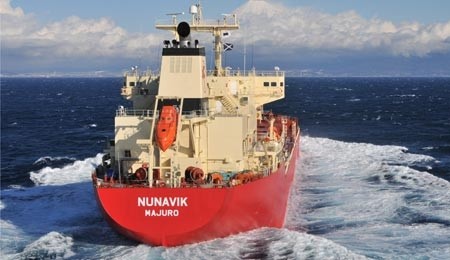Indian Seafarers Freed After Months of Detention at Yemen’s Ras Isa Port
India says it has secured the release of more than 150 seafarers who were stranded at Yemen’s Ras Isa Port, according to the Directorate General of Shipping. All 11 vessels...

Earlier this year, the MV Nunavik became the first vessel to carry a cargo of Arctic origins the full length of Canada’s Northwest Passage. Photo courtesy Fednav
The International Maritime Organization (IMO) has adopted historic legislation for the improved safety of ships operating in the polar regions and their crews.
During the 94th session of IMO’s Maritime Safety Committee held this week, the IMO adopted the International Code for Ships Operating in Polar Waters, commonly referred to as the Polar Code, as well as related amendments to the International Convention for the Safety of Life at Sea (SOLAS).
The Polar Code is the first mandatory blanket legislation for ships that specifically addresses potential hazards unique to arctic and antarctic environments, such as ice, remoteness and rapidly changing and severe weather conditions, and provides goals and functional requirements related to ship design, construction, equipment, operations, training, and search and rescue.
The expected date of entry into force of the SOLAS amendments is 1 January 2017 for new ships constructed after that date. Ships constructed before 1 January 2017 will be required to meet the relevant requirements of the Polar Code by the first intermediate or renewal survey, whichever occurs first, after 1 January 2018.
The Polar Code will be mandatory under both SOLAS and the International Convention for the Prevention of Pollution from Ships (MARPOL).
The adoption of the Polar Codes comes as maritime traffic increases in the polar regions, particularly in the arctic where shrinking sea ice has opened new routes and extended the summer shipping season.
Ships trading in the polar regions already have to comply with all relevant international standards adopted by IMO, but the newly adopted SOLAS chapter XIV “Safety measures for ships operating in polar waters”, adds additional requirements, by making mandatory the Polar Code (Preamble, Introduction and Part I-A (Safety measures)).
While the Code is largely welcomed and viewed as a major step forward for shipping in the arctic, it has been criticized over aspects that it does not address, such as ballast water treatment and the use of heavy fuel oil.

Sign up for gCaptain’s newsletter and never miss an update

Subscribe to gCaptain Daily and stay informed with the latest global maritime and offshore news


Stay informed with the latest maritime and offshore news, delivered daily straight to your inbox
Essential news coupled with the finest maritime content sourced from across the globe.
Sign Up